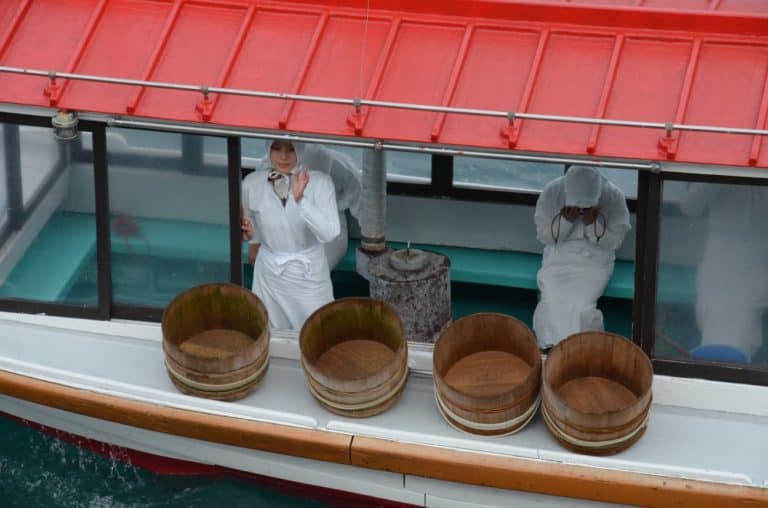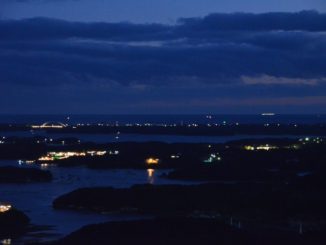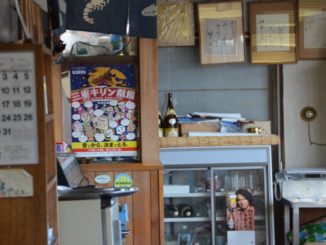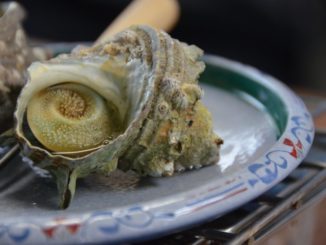Iseshima, between Osaka and Nagoya
Prefecture: Mie
Surface area: 912.42 Km2
Population: 229,574
Telephone area code: (0)599
The name Iseshima is the result of uniting two place names, Ise and Shima and is a city located in the southern part of the prefecture of Mie, half way along the road between Osaka and Nagoya and includes the cities of Ise, Shima and also Toba.
The Shima peninsula in Japan, which is where Ishima is situated, has been designated as a National Park and is an important tourist attraction because of its natural beauty.
The place of most historical and cultural interest on the peninsula is the Shinto shrine at Ise which is one of the most important in the country due to its symbolic value and the importance attributed to it by the imperial dynasty starting from the Meiji Restoration dating back to the late 1800’s.
What to see in Iseshima
The Ise Grand Shrine is by far the most important attraction in Iseshima. It boasts a tradition of ancient worship despite the fact that its symbolic value as a state Shinto shrine that can be traced back to the formulation of Shinto occurred after the Meiji Restoration, rather than to any ghostly ancient origins.
In any event, one of the most sacred objects of the Shinto religion is preserved at Ise which is a mirror that, according to Kojiki, was constructed in order to confuse the Sun Goddess Amaterasu by bringing the light back into the world which had disappeared when the goddess was hidden away in a cave.
The Gods organised a dance outside the cave and, whilst attracting her attention, also aroused her curiosity.
When the goddess decided to come out of the cave, they told her that a more important goddess than her had appeared and they put the mirror in front of her.
The goddess saw herself reflected in the mirror and came out of the cave for good bringing the light back into the world.
In a passage of The Nihon Shoki, one of the most ancient Japanese manuscripts, many references are made to the myths surrounding the foundation of historical Japan and mention is made of the descent to earth by the Gods and of the bond of kinship between the goddess Amaterasu and the imperial family.
The shrine of Ise consists of an internal sanctuary known as the Naigu (nai meaning inside and gu meaning sanctuary) which is considered to be the most sacred place within the confines of the shrine and is dedicated to the sun goddess Amaterasu.
The outer sanctuary, the gaigu, (gai meaning exterior) is dedicated to the god Toyoke Omikami, the god of food, the home and clothes.
There are barriers in place which prevent visitors from accessing the most sacred part of the shrine.
The shrine at Ise shares a special feature with other important shrines such as that of Izumo, which is that they are rebuilt from scratch every twenty years.
During this complicated ritual which sees religion and architecture become intertwined, replica sanctuaries are built in which the treasures belonging to the kami (the spirit world) are then rehoused whilst the reconstruction of the original sanctuary takes place. This ritual is extremely expensive in financial terms.
The sanctuary is reached via an access road of about 1km which is known as the Oharaimachi on which there are buildings in the traditional style on either side with restaurants, souvenir shops and shops selling sweets.
Another worthy attraction if you are visiting Iseshima is the Mikimoto island of pearls in Toba Bay.
Mikimoto Kokichi was the man who started the first successful cultivation of cultured pearls and whose name is now recognised worldwide.
The technique which gave positive results for the first time in 1893, involved grafting the mother-of-pearl nucleus with a special technique inside the oysters which would eventually result in the growing of a pearl.
There is also a memorial hall on the island which tells the story of Mikimoto and all about the cultivation of pearls.
It is also possible to see the female “Ama” divers who are known as the Ladies of the Sea and who have traditionally undertaken the activity of deep sea diving in Japan principally in search of seaweed and various different types of shellfish such as clams and abalones.
Somewhere that is also very famous is Futami, a suburb of Ise where there is a rock formation rising up out of the sea that is called the Meoto iwa which literally means “the married couple rocks.” The larger rock which is the husband, is linked to the smaller rock which is the wife, with a shimenawa, a sacred cord that is used in the Shinto religion to delineate sacred spaces.
The cord is replaced three times a year.
It is also possible to visit three “themed” villages in Iseshima and the Spanish village in Shima is also an amusement park.
The Mediterranean village, also in Shima, reproduces the architecture and atmosphere of a town on the Mediterranean.
And lastly, the Azuchi-Momoyama Bunka Mura Culture Village is also close to Ise and is a reconstruction of the life and buildings from the Azuchi-Momoyama era (1573-1603) which immediately preceded the Edo period.
The view we could not see
[Jan.2013] We were so good at ‘treasure each encounter, because it will never recur’ theory that when we arrive at Yokoyama Visitor Centre, it was already dark. The place was strongly recommended by the lady…
The foods were so good that we had to change the plan
[Jan.2013] When we had a family holiday in Iseshima, after visiting Toba, we were planning to have a sightseeing boat trip at Kashikojima. The last boat was to leave at 3:30pm, so before that we…
Appreciate fresh shellfish
[ Jan.2013] Early in January, we had a short family trip to Iseshima in Japan. I do not mean that we payed a visit to the Ise Shrine, which would be very very crowded in…




